Albumosomes formed by cytoplasmic pre-folding albumin maintain mitochondrial homeostasis and inhibit nonalcoholic fatty liver disease
- PMID: 37321990
- PMCID: PMC10272166
- DOI: 10.1038/s41392-023-01437-0
Albumosomes formed by cytoplasmic pre-folding albumin maintain mitochondrial homeostasis and inhibit nonalcoholic fatty liver disease
Abstract
Hepatic mitochondrial dysfunction contributes to the progression of nonalcoholic fatty liver disease (NAFLD). However, the factors that maintain mitochondrial homeostasis, especially in hepatocytes, are largely unknown. Hepatocytes synthesize various high-level plasma proteins, among which albumin is most abundant. In this study, we found that pre-folding albumin in the cytoplasm is completely different from folded albumin in the serum. Mechanistically, endogenous pre-folding albumin undergoes phase transition in the cytoplasm to form a shell-like spherical structure, which we call the "albumosome". Albumosomes interact with and trap pre-folding carnitine palmitoyltransferase 2 (CPT2) in the cytoplasm. Albumosomes control the excessive sorting of CPT2 to the mitochondria under high-fat-diet-induced stress conditions; in this way, albumosomes maintain mitochondrial homeostasis from exhaustion. Physiologically, albumosomes accumulate in hepatocytes during murine aging and protect the livers of aged mice from mitochondrial damage and fat deposition. Morphologically, mature albumosomes have a mean diameter of 4μm and are surrounded by heat shock protein Hsp90 and Hsp70 family proteins, forming a larger shell. The Hsp90 inhibitor 17-AAG promotes hepatic albumosomal accumulation in vitro and in vivo, through which suppressing the progression of NAFLD in mice.
© 2023. The Author(s).
Conflict of interest statement
The authors declare no competing interests.
Figures
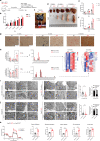
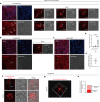
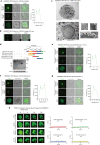
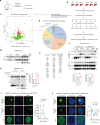
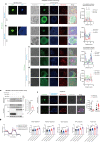
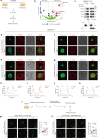

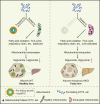
Similar articles
-
Mitochondrial dysfunction in high-fat diet-induced nonalcoholic fatty liver disease: The alleviating effect and its mechanism of Polygonatum kingianum.Biomed Pharmacother. 2019 Sep;117:109083. doi: 10.1016/j.biopha.2019.109083. Epub 2019 Jul 4. Biomed Pharmacother. 2019. PMID: 31387169
-
Dihydromyricetin Ameliorates Nonalcoholic Fatty Liver Disease by Improving Mitochondrial Respiratory Capacity and Redox Homeostasis Through Modulation of SIRT3 Signaling.Antioxid Redox Signal. 2019 Jan 10;30(2):163-183. doi: 10.1089/ars.2017.7172. Epub 2018 Feb 21. Antioxid Redox Signal. 2019. PMID: 29310441
-
Protection of hepatocyte mitochondrial function by blueberry juice and probiotics via SIRT1 regulation in non-alcoholic fatty liver disease.Food Funct. 2019 Mar 20;10(3):1540-1551. doi: 10.1039/c8fo02298d. Food Funct. 2019. PMID: 30785444
-
Nonalcoholic Fatty Liver Disease (NAFLD). Mitochondria as Players and Targets of Therapies?Int J Mol Sci. 2021 May 20;22(10):5375. doi: 10.3390/ijms22105375. Int J Mol Sci. 2021. PMID: 34065331 Free PMC article. Review.
-
Mitochondria, oxidative stress and nonalcoholic fatty liver disease: A complex relationship.Eur J Clin Invest. 2022 Mar;52(3):e13622. doi: 10.1111/eci.13622. Epub 2021 Jun 15. Eur J Clin Invest. 2022. PMID: 34050922 Review.
Cited by
-
The impact of aerobic and anaerobic exercise interventions on the management and outcomes of non-alcoholic fatty liver disease.Physiol Res. 2024 Nov 12;73(5):671-686. doi: 10.33549/physiolres.935244. Physiol Res. 2024. PMID: 39530904 Free PMC article. Review.
-
Mitochondrial Dysfunction as a Pathogenesis and Therapeutic Strategy for Metabolic-Dysfunction-Associated Steatotic Liver Disease.Int J Mol Sci. 2025 Apr 30;26(9):4256. doi: 10.3390/ijms26094256. Int J Mol Sci. 2025. PMID: 40362504 Free PMC article. Review.
-
Advances in the structures, mechanisms and targeting of molecular chaperones.Signal Transduct Target Ther. 2025 Mar 12;10(1):84. doi: 10.1038/s41392-025-02166-2. Signal Transduct Target Ther. 2025. PMID: 40069202 Free PMC article. Review.
-
Cell senescence in liver diseases: pathological mechanism and theranostic opportunity.Nat Rev Gastroenterol Hepatol. 2024 Jul;21(7):477-492. doi: 10.1038/s41575-024-00913-4. Epub 2024 Mar 14. Nat Rev Gastroenterol Hepatol. 2024. PMID: 38485755 Review.
-
High-fat diet disrupts the gut microbiome, leading to inflammation, damage to tight junctions, and apoptosis and necrosis in Nyctereutes procyonoides intestines.Microbiol Spectr. 2024 Apr 2;12(4):e0418223. doi: 10.1128/spectrum.04182-23. Epub 2024 Feb 20. Microbiol Spectr. 2024. PMID: 38376358 Free PMC article.
References
MeSH terms
Substances
LinkOut - more resources
Full Text Sources
Medical
Molecular Biology Databases
Miscellaneous

